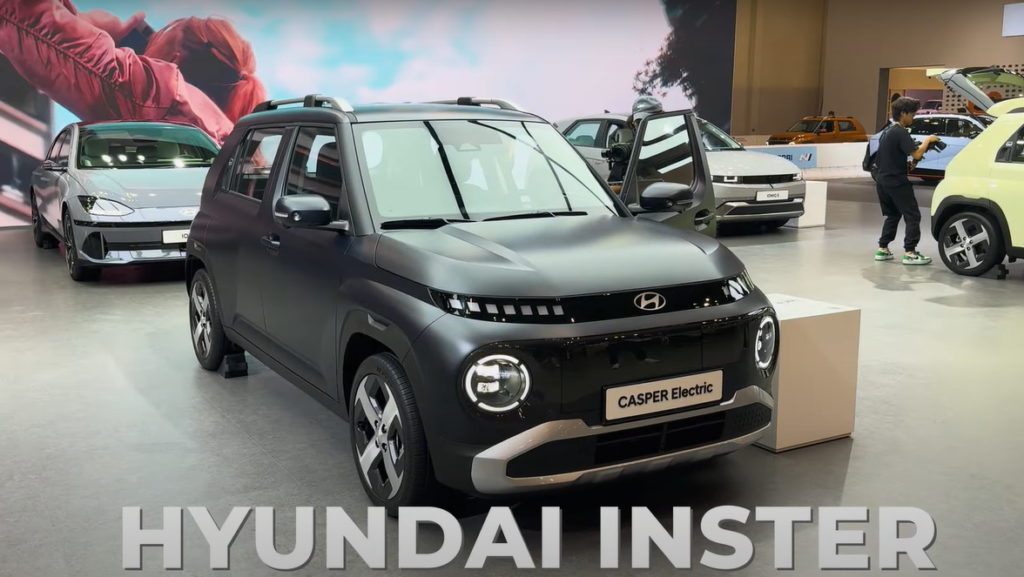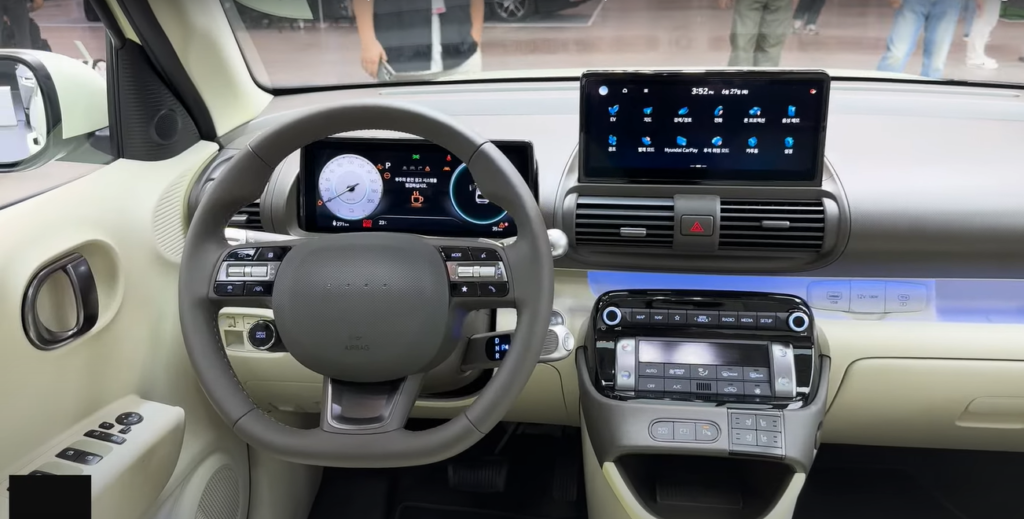Hyundai Inster 2024 Review: First Drive Impressions in Korea
The Hyundai Inster 2024 is an exciting new addition to the electric vehicle (EV) market, particularly in the small SUV segment. As Hyundai’s newest cut-priced EV, the Inster is positioned to attract consumers looking for an affordable yet efficient electric car. In this review, we take a closer look at the Hyundai Inster, based on the first drive experience in Korea. This review will delve into its design, performance, features, and overall potential in the global EV market, with a particular focus on its expected release in Australia.

A Quick Introduction to the Hyundai Inster
The Hyundai Inster, which will be known as the Hyundai Casper EV in Korea, is essentially a reworked and electrified version of the Kia Picanto-sized Casper. This small SUV has been a staple in the Korean market since 2021, where it gained popularity for its compact design and practicality. Now, Hyundai has taken the concept further by introducing an all-electric version aimed at providing a cost-effective solution for urban drivers.
Despite its small size, the Inster is expected to make a big impact, particularly in markets like Australia, where affordable electric vehicles are in demand. Slotted below the Kona Electric, the Inster is anticipated to be Hyundai’s most affordable EV offering in Australia, with a price point that could start in the low $30,000s.

Design and Aesthetics
The Hyundai Inster maintains the compact and boxy design of the original Casper, which gives it a unique and somewhat quirky appearance. The design language is modern and functional, with an emphasis on maximizing interior space despite the vehicle’s small footprint. The upright shape of the Inster contributes to its spacious feel inside, a crucial factor for potential buyers who prioritize practicality in a city car.
One of the key highlights of the Inster’s design is its increased wheelbase compared to the original Casper. This modification not only improves the overall stability of the vehicle but also enhances interior roominess. As a result, despite being categorized as an A-segment vehicle, the Inster offers a surprisingly comfortable and airy cabin experience. Visibility is also commendable, thanks to the upright design and well-positioned windows, making it an easy vehicle to maneuver in urban environments.
Performance and Driving Experience
The first drive of the Hyundai Inster in Korea provided a valuable opportunity to assess its performance in real-world conditions. It’s important to note that the vehicle tested was a pre-production prototype, meaning some aspects may still be subject to fine-tuning before the final version hits the market.
Steering and Handling:
The Inster is designed primarily for urban driving, and this is evident in its steering and handling characteristics. The steering is light and direct, making it easy to navigate through city streets and tight parking spaces. While the car was driven at speeds up to 70 km/h during the test, it’s clear that the Inster is tailored for lower-speed urban environments. The light steering complements the car’s intended use, providing a natural and intuitive driving experience.
Ride Comfort:
One of the aspects tested was the ride comfort, especially given the Inster’s compact size and lightweight. The prototype driven was equipped with 17-inch wheels, which may have contributed to a slightly firm ride, especially over speed bumps and rough patches of road. However, this is a common trade-off for vehicles equipped with larger wheels. It is worth noting that the final specifications for the Australian market have not yet been confirmed, and the Inster may be offered with smaller 15-inch wheels, which could result in a smoother ride.
Powertrain and Efficiency:
The Hyundai Inster is expected to be offered in both standard and long-range variants, similar to the approach taken with the Kona Electric. During the test drive, the Inster delivered an efficiency rate of 7.3 km per kilowatt-hour, which is a respectable figure for a small electric SUV. The vehicle’s power delivery was smooth and linear, although it is not designed to be a performance-oriented EV. With a quoted 0 to 100 km/h time of over 10 seconds, the Inster is not about setting speed records but rather providing a reliable and efficient urban transport solution.
Interior and Technology:
Inside, the Hyundai Inster features a familiar layout that will be instantly recognizable to anyone who has driven a recent Hyundai model. The cabin is equipped with two 10.25-inch screens – one serving as the digital instrument cluster and the other as the infotainment display. The screens are crisp and easy to navigate, contributing to a modern and user-friendly driving experience.
The Inster also comes with various driving modes, including Eco, Normal, Sport, and Snow, which can be selected depending on driving conditions. Additionally, the vehicle is equipped with paddle shifters that allow the driver to adjust the level of regenerative braking, a feature that enhances energy efficiency and can provide a one-pedal driving experience in its most aggressive setting.
Initial Impressions and Market Potential
Based on the initial drive in Korea, the Hyundai Inster appears to be a well-rounded and practical electric vehicle that could appeal to a wide range of buyers. Its compact size, efficient powertrain, and modern features make it an attractive option for urban dwellers seeking an affordable entry into the EV market.
One of the key questions that remain is how the Inster will perform on Australian roads, which are known for their varied and sometimes challenging conditions. The final verdict on the Inster will depend on its ability to handle these conditions, as well as its real-world electric range and efficiency.
However, from a first impression standpoint, the Inster seems poised to fill a significant gap in the market, particularly in the sub-$40,000 EV segment. As more affordable electric vehicles become available, competition is likely to increase, but Hyundai’s reputation for reliability and value for money could give the Inster a competitive edge.
In summary, the Hyundai Inster 2024 is shaping up to be an exciting new option for consumers looking for a small, affordable, and practical electric SUV. With its expected release in early 2025 in Australia, it will be interesting to see how the market responds to this new offering from Hyundai. As we await further updates and a full review on Australian roads, the Inster remains a vehicle to watch in the rapidly evolving EV landscape.

